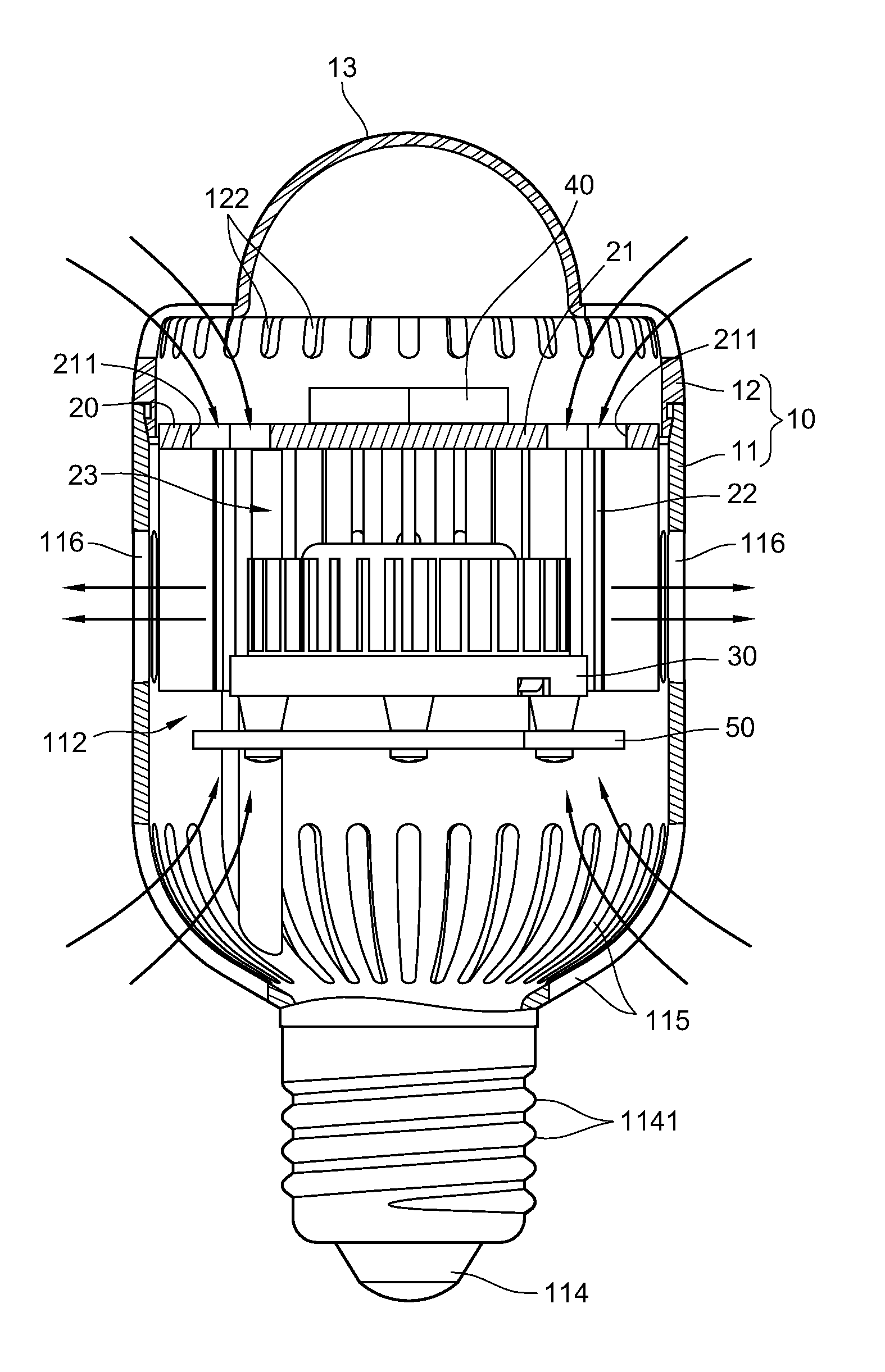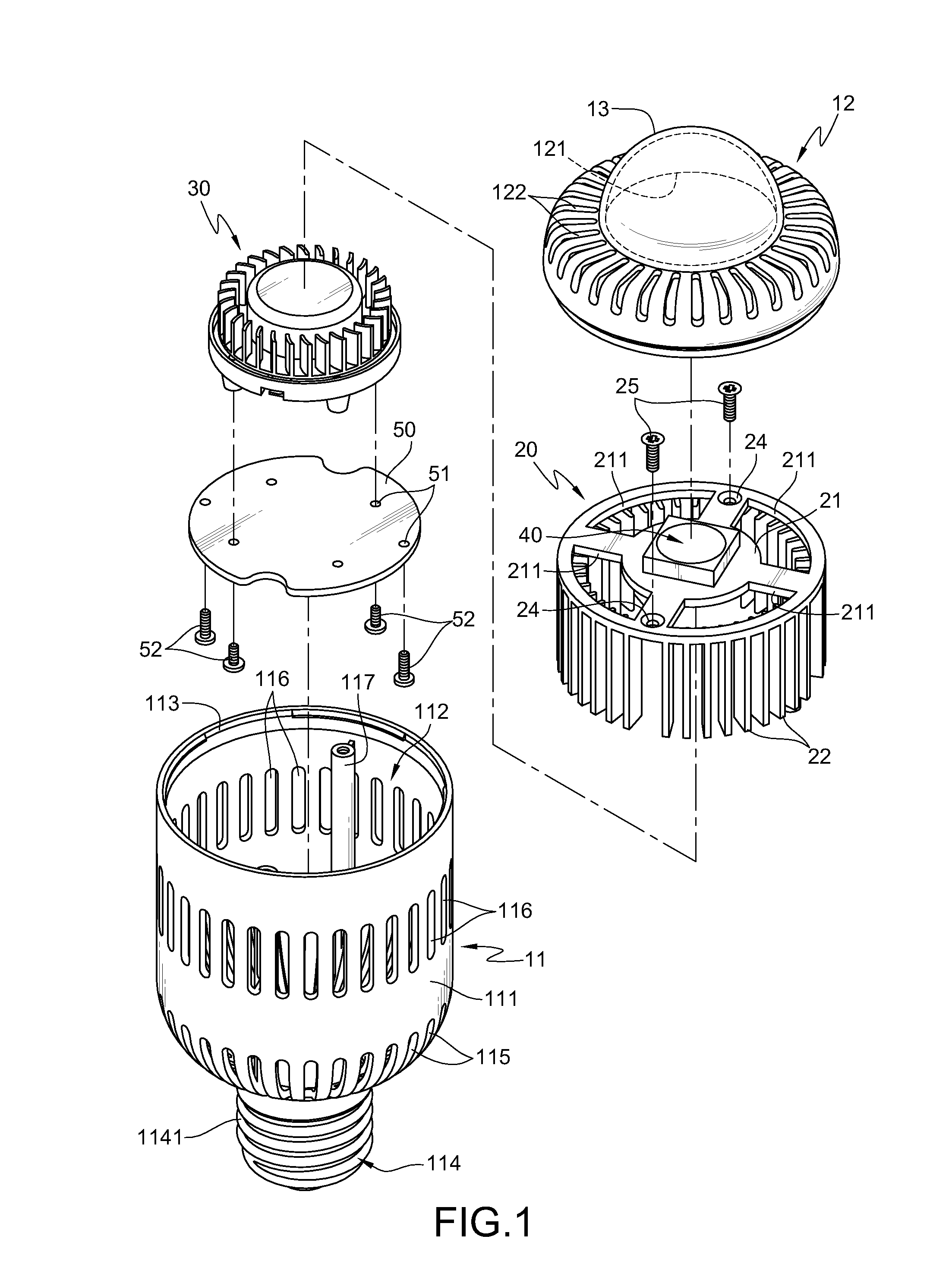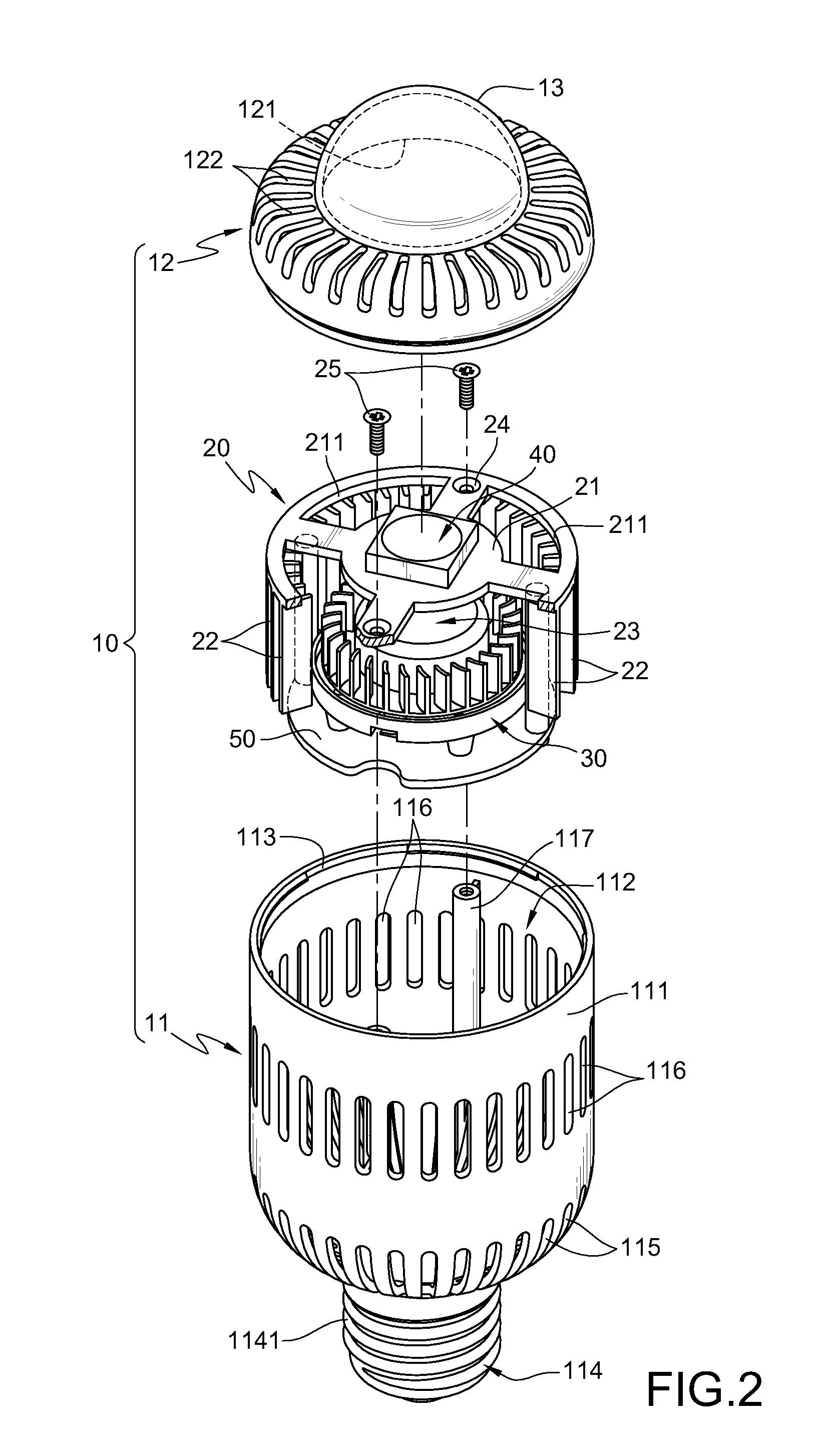Lamp structure
a technology of light source and structure, applied in the direction of discharge tube main electrodes, semiconductor devices of light sources, lighting and heating apparatus, etc., can solve the problems of reducing the overall light emission increasing the temperature of the led, and reducing the efficiency of the led, so as to improve the heat dissipation convection
- Summary
- Abstract
- Description
- Claims
- Application Information
AI Technical Summary
Benefits of technology
Problems solved by technology
Method used
Image
Examples
Embodiment Construction
[0028]In order to make the objectives, structures, characteristics, and functions of the present invention more comprehensive, the embodiments are illustrated in detail as follows.
[0029]As shown in FIGS. 1, 2, and 3, FIG. 1 is a schematic exploded view according to a first embodiment of the present invention. FIG. 2 is a schematic partial combination view according to the first embodiment of the present invention. FIG. 3 is a schematic sectional view according to the first embodiment of the present invention.
[0030]The lamp structure of the present invention substantially comprises a lamp housing 10, a heat sink 20, and a fan 30. The lamp housing 10 has a body 11 and a cover 12. The body 11 has a surrounding wall 111 that surrounds along a vertical axis, and a chamber 112 is defined inside the surrounding wall 111. An opening 113 is formed on one side of the body 11, and an electrically conductive portion 114 is disposed on the other side of the body 11.
[0031]The electrically conduct...
PUM
 Login to View More
Login to View More Abstract
Description
Claims
Application Information
 Login to View More
Login to View More - R&D
- Intellectual Property
- Life Sciences
- Materials
- Tech Scout
- Unparalleled Data Quality
- Higher Quality Content
- 60% Fewer Hallucinations
Browse by: Latest US Patents, China's latest patents, Technical Efficacy Thesaurus, Application Domain, Technology Topic, Popular Technical Reports.
© 2025 PatSnap. All rights reserved.Legal|Privacy policy|Modern Slavery Act Transparency Statement|Sitemap|About US| Contact US: help@patsnap.com



